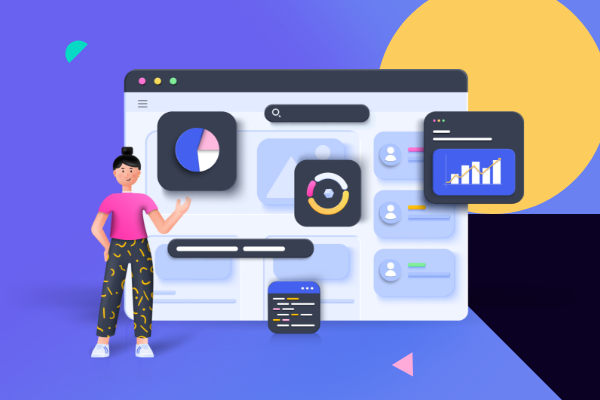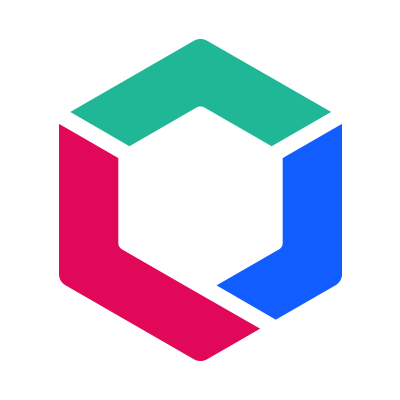HubSpot Paid Media Social Media Marketing
What to Know About Paid Search and Paid Social Advertisements
03/14/2024 • 7 min read • Written by Lynton Team
Table of Contents
There's no doubt inbound marketing works — all the content, social media posts, and emails you've created will continue to pay you handsome rewards. The downside? It takes a minute to see results.
If you want to boost your efforts, paid media is the way. In this blog, we’ll discuss the benefits of using paid media — paid search and paid social — and share some examples of when to inject them into your inbound efforts.
Understanding Paid Search and Paid Social
Adding paid media to your inbound marketing strategy is a great way to amplify the content you’ve spent time creating or the product you’ve designed.
Paid search is when companies pay search engines to display their ads higher on search engine results pages (SERPs). Pay-per-click (PPC) ads are the most common form of paid search because companies don’t pay anything until someone clicks their ads. It’s an affordable way to advertise and ensure you reach your intended audience.
Paid social ads are simply social media ads. You’ll see these labeled as “sponsored” content. Paid social ads help target audiences and drive traffic the same way organic traffic would.
Here are a few other benefits of using paid media.
- You’ll get faster results
- It’s targeted
- You’ll reach more people
- It will provide meaningful analytics
- It offers lead nurturing opportunities when using pay-per-click (PPC) ads
Paid Social vs. Paid Search: What’s the Difference?
You may find that one of these ad options works better for your company, or maybe you’ll utilize both. This chart explains the main difference between each method.
| Paid Social Ads | Paid Search Ads |
|---|---|
Build relationships and help generate interest |
Your audience already knows what they want they're easier to attract |
Better targeting options |
Target with keywords and phrases |
Proactive |
Reactive |
Design-friendly, more ad formats |
Text-heavy |
Easier to get top-of-funnel |
Harder to place in tunnel because they're usually ready to buy |
Easier to catch impulse buyers while they browse |
Users have to search a specific keyword or phrase |
Can be costly if running to many ads or you're targeting the wrong audience |
Can be more affordable when using PPC |
Rate of change on social platforms |
Search engines don't change as frequently as social networks |
Benefits of Paid Search and Paid Social Advertisements
There are many benefits to using paid media in your marketing campaigns, and we’ve touched on a few of them already. Here, we’ll go into the benefits and some downsides of using each type of ad.
Benefits of Using Paid Search Ads
- You get measurable results
- Achieve near-immediate visibility
- Increase brand awareness
- Highly interested leads (based on keyword research)
- Provides a competitive advantage when you are seen before your rivals in the industry
- Cost-effective when using PPC
- Get more qualified leads
- Increased conversion rates
Downsides of Using Paid Search Ads
- Not design-friendly
- They’re an ongoing expense
- They need continuous maintenance
- Can be competitive
- Consumer reluctance to click on paid ads
- Risk of money loss when ads don’t perform
Benefits of Using Paid Social Ads
- Increased brand awareness
- Highly targeted audiences, plus look-alike audiences
- Higher visibility
- Measurable outcomes
- Retargeting opportunities
- Wider reach
- Improved brand loyalty with audience interaction
- Affordable
- Design-friendly
Downsides of Using Paid Social Ads
- Competitive
- Can annoy consumers by being too repetitive
- You need internal resources to manage campaigns
- Allow for negative feedback via comments
How to Use HubSpot’s Paid Ads Tool
To use HubSpot’s Paid Ads Tool, you need to first connect your Google and social media accounts. To do this, navigate to Marketing in the left nav bar and click Ads.
From here, you need to create an ad audience to specify who should see your ads on your chosen platforms. More information on this can be found here.
Here’s an example of how to create a Facebook ad.
- After connecting your Facebook Ads account to HubSpot, navigate to “Marketing” and then select “Ads.”
- In the upper right, click “Create ad campaign,” then select “Lead generation.”
- At the top of the page, click the pencil icon to name your Facebook lead ad.
- Using the Ad account and Facebook page dropdown menus, select which ad account you’re creating this ad for and the exact Facebook page your ad will use to sync leads to HubSpot. Make sure you’ve agreed to the Facebook Lead Ads terms of service before continuing.
- Select the image or video you want to use to grab your Facebook audience’s attention. On the right, you will see your selection reflected in your ad preview.
- Next, use the text and body copy module to enter your ad copy. This text tells people about what you're promoting and how it may help them.
- Then, enter your headline. Headlines that are clear, concise, memorable, and eye-catching tend to do better, and longer headlines may get cut off after publishing.
- Next, choose the call-to-action that best aligns with the action you want your audience to take.
- Finally, choose your Facebook form. If you haven’t ever created one, click the “Create new Facebook form” option. On the right, set up the form that will appear when visitors click your ad.
- Next, select the Targeting tab.
- On the left, select the audience you would like to target with this ad. Audiences you’ve created in HubSpot and Facebook will be available in this menu. When you’re done making your selection, click “Save.”
- In the Budget and Schedule section, set your budget and the duration of this ad. First, set the daily or total budget for the ad. The actual amount spent daily may vary, as determined by Facebook based on the opportunities for results each day. A minimum of $5 is recommended.
- Next, set a duration for your ad. Using these options you can customize down to the exact dates and time this ad will run.
- Review the total price of your ad in the text box.
- Finally, navigate to the “Automation” tab. Here, you can enable notifications to be sent to you or your team the moment a lead ad is submitted. You can also create a custom list of all contacts who submitted this specific lead ad.
- Once you've set up your automation, at the top right, click “Publish” to take this lead ad live.
How to Get Started with Paid Search and Paid Social
Here are a few great opportunities for using paid ads to promote your business.
Use Paid Media to Promote Savings
Spending money on paid media to promote discounts on your product or service is useful. You could even tie in savings with a specific holiday or time of year. For example, if you're an HVAC company and summer is the slow time for furnace installs, now would be a perfect opportunity to advertise a discount. “The sun’s out, but winter is coming! Is your furnace ready?”
Use Paid Media to Announce New Content
Paid media can support the release of a new piece of content like a case study or eBook, especially if the content includes new research or campaign results.
Promoting new content catered to the top of the funnel (TOFU) through paid media also helps you bring potential customers into lead nurturing campaigns and move them through the buyer's journey.
Use Paid Media to Encourage a Specific Action
When one of our clients wanted to capture 100,000 signatures through an online petition form dealing with a highly charged healthcare industry issue, we created ads for LinkedIn, Facebook, and X that encouraged stakeholders to sign. Our Facebook paid media efforts proved to be very successful and were shared to encourage friends of friends to sign the petition.
If you want to drive traffic to a certain area of your website, you can also use PPC ads to direct visitors to a specific webpage. Here, they may find gated content or a form asking for more questions in return for a helpful ebook, whitepaper, or product demo.
Use Paid Media to Find New Customers
Get in front of a new crowd using native advertising. Native ads come with a “sponsored” label, and creating them usually involves working with another publication to create content that’s relevant to you and resonates with their audience.
Use Paid Media to Target a Specific Audience
When you target your paid media, you get total control over who sees your ad, so you know you’re putting the right message in front of the right people. Social media platforms are a great place to target your ads. You can even create lookalike audiences to find new customers.
Use Paid Media to Boost Brand Awareness
Advertising on social media is a cost-effective way to get your brand out there. When you start appearing in people’s feeds regularly, you’ll build recognition. When you provide posts that add value, you’ll build brand loyalty.
Get Started With Paid Search and Paid Social Ads
Remember, inbound marketing takes time. If you need a traffic boost around a specific event or campaign, consider support from paid media ads. If you’re not sure where to start, we happen to be experts.
Reach out to our team for more information, or click here to learn more about our marketing services.
You May Also Like

SEO & Keywords
How to Blog Like an Expert
Learn expert blogging strategies, from SEO to content creation, to build your online presence, drive traffic, and establish a...
Keep Reading
Inbound Marketing
Blog Tags 101: What Are They And Why Do You Need Them?
Are you using blog tags correctly to boost your SEO? Check out these blog tag best practices.
Keep Reading
SEO & Keywords
SEO 101: What You Need to Know to Get Started
SEO isn’t a one-time deal — it’s an ongoing practice as part of your inbound marketing strategy. Here’s what you need to know...
Keep ReadingSubscribe Today



